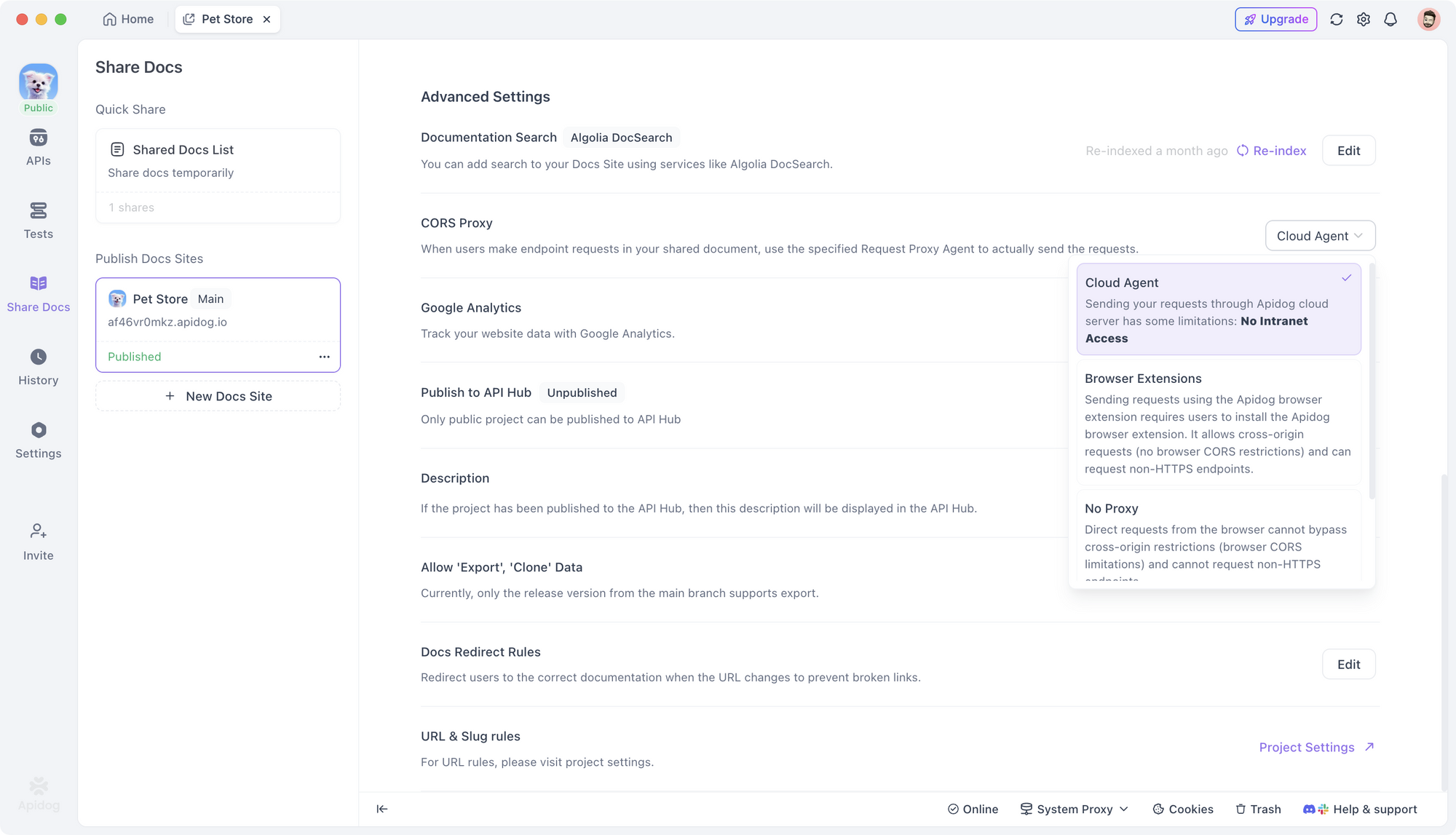Cross-origin resource sharing has become the invisible force that either enables or blocks your API testing efforts. In the rapidly evolving landscape of web development, understanding CORS isn't just helpful—it's essential for any developer working with APIs, especially when debugging endpoints.
When you encounter those frustrating browser security restrictions that prevent your API calls from working, you're facing CORS in action. This comprehensive guide delves into the mechanics of cross-origin resource sharing, explores when and why you need it, and reveals how Apidog's innovative CORS proxy feature transforms challenging debugging scenarios into streamlined development workflows.
What is Cross-Origin Resource Sharing (CORS)?
Cross-Origin Resource Sharing (CORS) represents a critical HTTP-header based security mechanism that allows servers to specify which origins can access their resources. This protocol emerged as a controlled exception to the Same-Origin Policy (SOP), which browsers enforce to prevent malicious websites from accessing sensitive data across different domains.
The fundamental challenge CORS addresses involves scenarios where your frontend application, served from https://yourapp.com, needs to fetch data from an API hosted at https://api.example.com. Without proper CORS configuration, browsers will block these requests, displaying the dreaded CORS error that has frustrated countless developers.
The Technical Foundation of CORS
CORS operates through a sophisticated system of HTTP headers that facilitate secure communication between different origins. When a browser encounters a cross-origin request, it initiates a complex negotiation process:
- Simple requests proceed directly with additional headers
- Preflighted requests require an initial OPTIONS request to verify permissions
- Credentialed requests involve cookies and authentication data with stricter security requirements
This mechanism ensures that servers explicitly consent to cross-origin access, maintaining security while enabling legitimate cross-domain functionality.

Understanding CORS in API Development and Testing
For API developers and testers, CORS represents both a security feature and a potential obstacle. The challenge intensifies when working with API documentation sites where users need to test endpoints directly from their browsers.
Common CORS Scenarios in API Testing
Development Environment Challenges:
- Testing APIs from localhost while the API runs on a different port
- Integrating third-party APIs that don't support CORS
- Debugging API responses in browser-based testing tools
Production Documentation Issues:
- Users unable to test API endpoints from documentation sites
- Cross-domain authentication failures
- Inconsistent behavior across different browsers and environments
API Testing Tools Limitations:
- Browser-based testing tools blocked by CORS policies
- Inability to test real-world scenarios with actual browser constraints
- Complicated workarounds that don't reflect production behavior
These challenges highlight why sophisticated API testing tools like Apidog have developed specialized solutions to handle CORS complexities seamlessly.
When Do You Need CORS Proxy Solutions?
CORS proxy solutions become essential in several critical scenarios that every API developer encounters:
Browser-Based API Testing Requirements
When your API documentation needs to support interactive testing directly from the browser, traditional CORS restrictions can completely block user engagement. Users expect to click "Try it out" buttons and see real API responses, but CORS policies often prevent this functionality.
Third-Party API Integration Challenges
Many external APIs don't provide appropriate CORS headers, making them impossible to access directly from browser-based applications. This limitation particularly affects:
- Public data APIs that lack CORS configuration
- Legacy systems that predate modern CORS requirements
- Internal APIs not designed for browser access
Development and Debugging Workflows
During API development, teams frequently need to test endpoints from different environments and domains. CORS restrictions can artificially limit testing capabilities, forcing developers to use workarounds that don't reflect real-world usage patterns.
How Apidog's CORS Proxy Revolutionizes API Testing
Apidog's CORS proxy feature addresses these challenges through an elegant, integrated solution that transforms how developers approach cross-origin API testing and debugging.
Seamless Integration with API Documentation
Unlike standalone CORS proxy services, Apidog's solution integrates directly with your API documentation workflow. When users encounter CORS restrictions while testing endpoints on your published documentation site, Apidog automatically routes requests through its designated Request Proxy Agent.

This integration ensures that:
- All endpoint requests from the published API documentation work seamlessly
- User experience remains smooth and professional
- Security considerations are properly managed
- Performance stays optimal with intelligent routing
Advanced Request Routing Capabilities
Apidog's CORS proxy doesn't just bypass restrictions—it provides intelligent request management that enhances the entire API testing experience:
Smart Routing Logic:
- Automatically detects when CORS proxy is needed
- Routes requests through optimized proxy infrastructure
- Maintains request integrity and response accuracy
- Preserves authentication and header information
Enhanced Security Features:
- Validates request origins and destinations
- Implements proper credential handling
- Maintains audit trails for debugging
- Protects against common proxy vulnerabilities
Conclusion: Mastering CORS for API Development Success
Cross-origin resource sharing represents a fundamental aspect of modern web development that every API developer must understand and manage effectively. While CORS can initially seem like an obstacle, proper understanding and the right tools transform it into a manageable aspect of secure API development.
Apidog's integrated CORS proxy solution exemplifies how modern API testing tools can eliminate traditional friction points while maintaining security and performance standards. By providing seamless cross-origin testing capabilities directly within your API documentation and testing workflows, Apidog enables teams to focus on building great APIs rather than wrestling with browser security restrictions.
